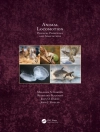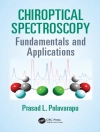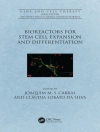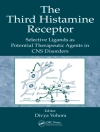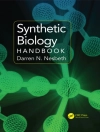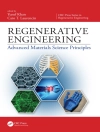This book contains the proceedings of the XVIII International Symposium on Retinal Degeneration (RD2018). A majority of those who spoke and presented posters at the meeting contributed to this volume. The blinding diseases of inherited retinal degenerations have no treatments, and age-related macular degeneration has no cures, despite the fact that it is an epidemic among the elderly, with 1 in 3-4 affected by the age of 70. The RD Symposium focused on the exciting new developments aimed at understanding these diseases and providing therapies for them. Since most major scientists in the field of retinal degenerations attend the biennial RD Symposia, they are known by most as the “best” and “most important” meetings in the field.
The volume presents representative state-of-the-art research in almost all areas of retinal degenerations, ranging from cytopathologic, physiologic, diagnostic and clinical aspects; animal models; mechanisms of cell death; candidate genes, cloning, mapping and other aspects of molecular genetics; and developing potential therapeutic measures such as gene therapy and neuroprotective agents for potential pharmaceutical therapy.
While advances in these areas of retinal degenerations were described, there will be many new topics that either are in their infancy or did not exist at the time of the last RD Symposium. These include the role of inflammation and immunity, as well as other basic mechanisms, in age-related macular degeneration, several new aspects of gene therapy, and revolutionary new imaging and functional testing that will have a huge impact on the diagnosis and following the course of retinal degenerations, as well as to provide new quantitative endpoints for clinical trials.
The retina is an approachable part of the central nervous system (CNS), and there is a major interest in neuroprotective and gene therapy for CNS diseases and neurodegenerations, in general. It should be noted that withsuccessful and exciting initial clinical trials in neuroprotective and gene therapy, including the restoration of sight in blind children, the retinal degeneration therapies are leading the way towards new therapeutic measures for neurodegenerations of the CNS. Many of the successes recently reported in these areas of retinal degeneration sprang from collaborations established at previous RD Symposia, and many of those were reported at the RD2016 meeting and included in the current volume. We anticipate the excitement of those working in the field and those afflicted with retinal degenerations is reflected in the volume.
Inhaltsverzeichnis
High Resolution Imaging Mass Spectrometry of Human Donor Eye: Photoreceptor Cells and Basal Laminar Deposits of Age-related Macular Degeneration.- The non-canonical role of Complement Factor H in Retinal Pigment Epithelium (RPE) cells and implications for Age-related Macular Degeneration.- Macular Pigment Carotenoids and Bisretinoid A2E.- Disturbed matrix metalloproteinases activity in age-related macular degeneraton.- Current views on Chr10q26 contribuiton to age-related macular degeneration.- Untargeted lipidomic profiling of aged human retina with and without age-related macular degeneration (AMD).- Decoding Race and Age-Relation Macular Degeneration: GPR 143 Activity is the Key.- Peroxisome proliferator-activated receptor gamma coactivator 1 alpha ( PGC-1x): a transcriptional regulator at the interface of aging and age-related macular degeneration?.- Regulation of ABCA1 by mi R-33 and mi R-34a in the aging eye.- The role of gene expressionregulation on genetic risk of Age-related Macular Degeneration.- Elastin layer in Bruch’s membrane as a target for immunizatio or tolerization to modulate patthology in the mouse model of somke-induced ocular injury.- Repuprosing drugs for treatment of age-relation macular degeneration.- Extracellular Vesicle RNA Contents as Biomarkers for Ocular Diseases.- Proteomics of retinal extracellular vesicles: a reviw inot an unexplored mechanism in retinal health and AMD pathogenesis.- Prime Editing Strategy to Instally the PRHP2 c.828+1G A mutations.- Analysis of CRB1 Pathogenic Variants Correctable with CRISPR Base and Prime Editing.- Generation of an Avian Myeloblastosis Virus (AMV) Reverse Transcriptase Prime Editor.- Pre-existing neutralizing antibodies against different adeno-associated virus serotypes in humans and large animal models for gene therapy.- Optimization of Capillary-based Western Blotting for MYO7A.- AAV Serotypes and Their Suitability for Retinal Gene Therapy.- Gene Augmentation ofautosomal dominant CRX-associated retinopathies.- Txnip gene therapy of retinitis pigmentosa improves cone health Factors affecting readthrough of natural versus premature termination codons.- Integrating Computational Approaches to Predict the Effect of Genetic Variants on Protein Stability in Retinal Degenerative Disease.- Network biology and medcine to resuce: Applications for retinal disease mechanisms and therapy.- Non-sydromic Retinal Degeneration Caused by Pathogenic Variants in Joubert Syndrome Genes.- Exonic variants that affect splicing- an opportunity for ‚hidden‘ mutations causing inherited retinal diseases.- Enhanced S-cone Syndrome, a Mini-Review.- The role of microglia in Inherited Retinal Diseases.- CD68: potential contributor to inflammation and RPE cell dystrophy.- Gene Expression of Clusterin, Tissue Inhibitor of Metalloproteinase-1, and Their receptors in Retinal Pigment Epithelial Cells and Muller Glial Cells is Modulated by Inflammatory Stresses.- Axonal Transport Defects in Retinal Ganglion Cells.- Connexins biology in the pathophysiology of retinal diseases.- Role of Nuclear NAD +in Retinal Homeostasis.- Retinal pigmented epithelium-derived ectopic norrin does not promote intraretinal angiogenesis in transgenic mice.- Caveolin-1 Muller glia exist as heat-resistant, high molecular weight complexes.- Role of VLC-PUFAs in Retinal and Macular Degeneration.- Ocular amyloid , condensates, and aggregates – higher order protein assemblies participate in both retinal degeneration and function.- Photoreceptor ion channels in signaling and disease.- The role of peripherin-2 /ROM1 complexes in photoreceptor outer segment disc morphogenesis.- Human mutations in Arl3, a small GTPase involved inlipidated cargo delibery to the cilia cause retinatl dystropthy.- Genotype-Phenotype Association in ABCA4-Associated Retinopathy.- Retinal pathoconnectomics: A Window into Neurodegeneration.- The role of Ceramide in Inherited Retinal Disease Pathology.- Extracelluar Matix: the Unexplored Aspects of Retinal Pathologies and Regeneration.- Role of TFEB in diseases assocaited with lysosomal dysfunction.- Retinoic acid receptor -related oprhan receptors (RORs) in eye development and disease.- A novel mouse model for Late-Onset Retinal Degeneration (L-ORD) devekios RPE abnormalities due to the loss of C1qtnf5/Ctrp5.- Comparison of mouse models of autosomal dominant retinitis pigmentosa due to P23H muations of Rhodopsin.- Compensatory Cone-Mediated Mechanisms in Inherited Retinal Degeneration Mouse Models: A Functional and Gene Expression Analsyis.- Inhibition of Ryanodine Receptor 1 Reduces Endoplasmic Reticulum (ER) Sress and Promotes ER Protein Degradation in Cyclic Nucleotide-gated Channel Deficiency.- Mouse choroid proteome revisited: foucs on aging.- Morphological and functional comparison of mice models for retinitis pigmentosa.- Current Advancements in Mouse Models of Retinal Disease.- Single-cell Itrnacriptomic Profiling of Muller Glia in the rd10 Retina.- Methods for in vivo characterization of proteostatis in the mouse retina.- Absence or PRCD leads to dysregulation in lipie Homeostatis resulting in disorganizationof photorecptor outer segment structure.- Expansion Microscopy of Mouse Photoreceptro Cilia.- Rod photorecptor specific ablation of Metformin target, AMPK, in preclinical model of autosomal recessvie retinitis pigmentosa.- TLR2 is highly overexpressed in retinal myeloid cells in the rd10 mouse model of retinitis pigmentosa.- Environmental light has an essentail effrect on the diseasae expression in a dominant RPE65 mutation.- Microglia Preserve Visual Function in A Mouse Model of Retinitis Pigmentosa with Rhodopsin-P23H Mutant.- Measuring the release of lactate from wild-type and rd1 mouse retina.- Aerobic glycolysis in photorecptors supports energy demand in the absence of mitochondrial coupling.- Redox Status in Retinitis Pigmentosa.- Perspectives on retinal dolichol metabolismand visual deficits in dolichol metalbolism-associated inherited disorders.- Retinal metabolic profile on IMPG2 deficiency mice with subretinal lesions.- Glutathione-coating of liposomes enhances the delivery of hydrophillic cargo to the inner nuclear layer in retinal cultures.- Modification of Mueller glial cell fate and proliferation with the use of small molecules.- A potential neuroprotective role for pyruvate kinase 2 in retinal degeneration.- Critical role of VEGF as a direct regulator of photorecptor function.- Lysine Ubiquitylation Drives Rhodopsin Protein Turnover.- In-silico prediction of MYO!C Rhodopsin Interactions and its Significance in Protein Localization and Visual Function.- A ciliary branched actin netowrk drives photoreceptor disc morphogenesis.- Revisiting the daily timing of POS phagocytosis.- Inhibition of Bacterial Peoptidoglycan Cytopahty by Retina Pigment Epithelial PGRP2 Amidase.- Understanding ischemic retinopathies: the role of Succinate and its recpto^T mutation.- Inducing neural regeneratio nfrom glia using proneural b HLH transcription factors.


